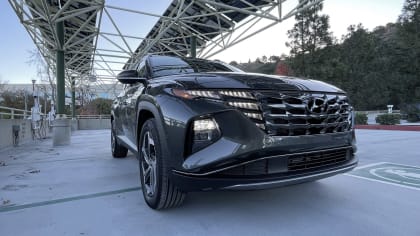EV vs Hybrid vs Petrol

What Is Cheaper To Run?
With electric vehicles becoming a more attractive proposition from a price perspective, more people are starting to wonder which type of vehicle is the most cost-effective to run - an EV, hybrid, or petrol car.
By The Editors
Mon, Aug 12, 2024 10:35 PM PST
Featured image by Michael Marais.
It used to be that Australian consumers were put off buying electric vehicles due to their higher purchase price over hybrid and petrol cars. However, in recent times, the cost of a new EV has dropped substantially, with Tesla Model 3s being about $7k less expensive to buy brand new and BYD Atto 3 being about $8k cheaper. This is due in part to these companies reducing their production costs, developing a more aggressive strategy for customer acquisition and various state government incentives. Moreover, increased confidence has been gained from recent findings by market research firm Gartner, who claimed that electric vehicles might be cheaper to build than petrol or hybrid cars by 2027.
So, with electric vehicles becoming a more attractive proposition from a price perspective, more people are starting to wonder which type of vehicle is the most cost-effective to run - an EV, hybrid, or petrol car. In this post, we’ll attempt to answer the question to help you decide the best option for you.
Cost Per KM
On a cost-per-km basis, electric vehicles are much cheaper to run than petrol or hybrid cars. This has been confirmed by the Electric Vehicle Council in Australia, whose recent research has revealed that electric vehicle charging station costs are much less expensive than filling up petrol at the bowser.
According to them, electric vehicles cost, on average, 0.33c per litre to charge. By contrast, internal combustion engine vehicles will set you back $1.50 per litre. In real terms, charging your electric vehicle can equate to a saving of approximately $1600 on fuel for petrol or hybrids, based on the average Australian driving 15,000 km a year. Moreover, if you have solar panels at your home that store electricity, you can effectively charge your EV for free.
Maintenance
Charging or filling your car with petrol is just one element of running costs. Another thing you will have to consider is maintenance. In this respect, electric vehicles tend to be cheaper to maintain than petrol or hybrid cars because they have fewer moving parts. This means they do not need to be serviced as regularly or require parts to be replaced. (Typically, what gets looked at in an EV service is the battery care and maintenance, brake and cooling systems, tires, and software updates.)
Generally speaking, petrol and hybrid cars need to be serviced every six months or 10,000 km. However, most EVs only need servicing every 12 months or 20,000 km, and some, like the MG4, Volvo C40 Recharge, or Polestar 2, only require it every 24 months or 30,000 to 40,000 km. Moreover, the Electric Vehicle Council suggests the average maintenance cost for a petrol or hybrid car is about 7 cents per km, while it's only 2 cents for an EV. In monetary terms, based on the average of 15,000 km Aussies drive every year, this equates to about $1050 per year for the former and only $300 for electric cars.
It’s worth noting that major advancements in lithium-ion battery technology, particularly in Chinese models, mean they now last for between 10 and 20 years. Currently, most electric vehicle manufacturers offer a 160,000 km or 10-year warranty on batteries, the cost of which is also expected to drop significantly in the next few years.
Insurance
Another aspect of running costs to consider is insurance. Not so long ago, it was actually about 20% more expensive to insure an electric vehicle than a petrol or hybrid car because insurance companies adopted a cautious approach. They also did not have a specialist network of repairers to draw on to fix damaged cars and were unaware of the vehicle's long-term performance.
However, the prices of insuring an electric vehicle are now falling more in line with those of petrol and hybrid cars, as people have greater confidence in the technology used to construct them, more people are buying these vehicles, and they can draw upon a bigger network of specialist repairers.
Verdict
Ultimately, the car you buy should be the right one for you. But all things considered, it is becoming increasingly cheaper to purchase an electric vehicle and, perhaps most crucially, run one. So, moving forward, they will become a much more attractive and cost-effective option to purchase and run for many people, particularly in light of state government incentives that target zero emissions by 2050.






